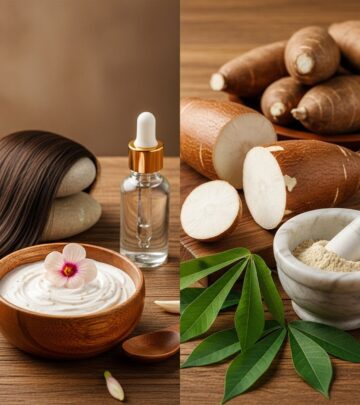Home Remedies to Eliminate Pet Urine Odor Effectively
Discover safe, natural solutions and tips for tackling pet urine odors in your carpets, floors, and fabrics without harsh chemicals.

Effective Home Remedies to Get Rid of Pet Urine Odor
Pet accidents are inevitable for most homes with cats or dogs. If left untreated, pet urine can leave behind persistent odors and unsightly stains that affect your home’s freshness and comfort. Fortunately, there are safe, natural, and cost-effective cleaning remedies to eliminate both the stink and the stain. This guide covers time-tested methods, materials needed, step-by-step instructions, and expert tips for dealing with pet urine in carpets, on floors, and on upholstery.
Why Is Pet Urine Odor So Difficult to Remove?
Pet urine is challenging to clean because it is not just water and waste – it’s also a mix of uric acid, ammonia, proteins, and bacteria. As it dries, urine forms crystals that cling to carpet fibers, wood grains, and fabric threads. These crystals are water-insoluble, making their odor persistent. The bacteria feed on the urine residue, releasing gases that make the smell even worse over time. Traditional cleaning products may mask the odor temporarily, but if the residue remains, so does the smell and risk of repeat accidents.
Immediate Action: The First Step in Pet Urine Cleanup
Acting quickly after a pet accident can make the difference between a minor inconvenience and a lingering problem. Here’s what to do the moment you discover fresh pet urine:
- Blot up as much urine as possible using paper towels or a clean absorbent cloth. Apply gentle pressure; avoid rubbing to prevent spreading the stain deeper.
- If cleaning hard surfaces, wipe up with a rag or towel, then rinse with clean water.
- For carpets, continue to blot until the area feels barely damp to the touch before proceeding to deep cleaning.
Key Ingredients for Natural Pet Odor Removal
Many household products are surprisingly powerful against urine’s stubborn smell. The most effective ones include:
- White vinegar – Neutralizes ammonia in urine through its acidic properties and helps dissolve uric acid crystals.
- Baking soda – Acts as a natural deodorizer, absorbing moisture and locking in bad odors.
- Hydrogen peroxide (3%) – Breaks down and oxidizes urine compounds, further neutralizing smells and removing stains.
- Dish soap – Assists in removing residues, especially from fabrics; use sparingly.
- Vodka – Functions as both a disinfectant and deodorizer, particularly for fabrics or carpets.
- Enzymatic cleaners – Specialty products containing natural enzymes that break down organic residue; highly effective for repeat issues.
Vinegar and Baking Soda Method: The Classic, Non-Toxic Solution
This tried-and-tested combination is safe for most surfaces and highly effective for both recent accidents and older, stubborn stains.
What You Need
- White vinegar
- Baking soda
- Spray bottle or bucket
- Clean towels or rags
- Vacuum (for carpets/fabric)
Step-by-Step Instructions
- Blot: If the stain is fresh, first soak up as much liquid as possible with paper towels or a cloth. If the stain is dried, rinse with cold water and blot the excess moisture.
- Mix Solution: Combine 1 part white vinegar with 1 part water in a spray bottle or bucket. For very strong odors, increase the vinegar concentration.
- Saturate: Apply the vinegar solution generously to the affected area and let it penetrate for 5–10 minutes.
- Blot Again: Use a clean towel to blot and absorb the liquid until mostly dry; the area may remain somewhat damp.
- Apply Baking Soda: Sprinkle a generous layer of baking soda over the treated spot. A subtle fizzing may occur as it interacts with the vinegar residue.
- Optional Scrub: Use a soft brush to help the baking soda work into carpet fibers or fabric for deeper absorption.
- Let Dry: Allow baking soda to sit until completely dry (a few hours to overnight for best results).
- Vacuum: Remove dried baking soda by vacuuming thoroughly. Inspect for lingering odors or stains and repeat as needed.
Note: For recurring pet accidents in the same spot, cover the area with a pee pad after cleaning to deter your pet while it dries fully.
Hydrogen Peroxide and Dish Soap Booster
If the vinegar and baking soda method is not strong enough, adding hydrogen peroxide and a small amount of dish soap can boost cleaning power — especially for set-in stains and odors.
Recipe and Application
- Mix 1 cup hydrogen peroxide (3%), 1 teaspoon mild dish soap, and 1 tablespoon baking soda.
- Pour this solution directly onto the stained area after initial blotting or after a vinegar wash.
- Allow to sit for 5–15 minutes.
- Blot with a clean towel to remove excess moisture.
- Let the area air dry completely, then vacuum residue.
Warning: Always use hydrogen peroxide-based solutions immediately after mixing. Do not store. Test on a small inconspicuous spot first, especially on colored carpets or fabrics, as hydrogen peroxide may lighten some materials.
Vodka for Pet Odors
Vodka’s antiseptic properties not only disinfect but also dissolve stains and neutralize odors, making it an effective option for deodorizing areas that resist other remedies. Use the cheapest vodka for cleaning purposes.
How to Use Vodka on Urine Stains
- Soak or blot up as much urine as possible first.
- Pour vodka directly on the affected spot or spray with a spray bottle.
- Let the vodka sit for 10–15 minutes.
- Blot or dab the area with a clean towel.
- For extra odor control, sprinkle with baking soda, let dry, and then vacuum.
Enzymatic Cleaners: When Natural Isn’t Enough
Enzymatic cleaners contain natural enzymes that digest organic waste (like urea, proteins, and uric acid crystals), breaking down odor and stain molecules at the source. These are especially effective when dealing with:
- Multiple accidents in the same spot
- Old, dried stains with persistent odor
- Pets repeatedly marking the same area
Apply enzymatic cleaners according to manufacturer instructions — saturate the area, allow time for enzymes to work (often 10–30 minutes), then blot and let air dry. Do not use ammonia-based products; these can make odors worse and encourage repeat marking.
What Not To Do When Cleaning Pet Urine Odors
- Avoid ammonia-based cleaners: Ammonia mimics the scent in urine and may cause pets to mark the same area again. It can also intensify odors.
- Never mix vinegar and bleach: Mixing these releases toxic chlorine gas, which is hazardous to breathe.
- Do not rub stains harshly: Rubbing can push urine deeper into fibers, making the problem worse.
Tips for Specific Surfaces
Carpet & Rugs
- Always blot, never scrub, to avoid spreading the stain.
- For deep stains, use a wet/dry vacuum or carpet cleaner after home treatments.
- Double application (vinegar then baking soda, followed by hydrogen peroxide/soap) may be necessary.
Hardwood & Tile Floors
- Wipe up urine immediately to prevent absorption and odor penetration.
- Use a diluted vinegar solution (but not too strong) to avoid damaging finishes.
- Avoid excess water on hardwood, as saturation may warp planks.
Upholstery & Mattresses
- Blot, use a gentle vinegar solution, and follow with baking soda and vacuum.
- For cushions, ensure thorough drying to prevent mildew.
- For persistent odor, consider professional cleaning or enzymatic products designed for upholstery.
Preventing Repeat Accidents and Odor Build-Up
- Thoroughly clean all previously soiled areas to remove traces invisible to human noses, but that pets can still detect.
- Use covers, mats, or barriers on favorite accident spots until retraining is complete.
- Ensure pets have frequent outside breaks or litter box access.
- Rule out medical issues like urinary tract infections or behavioral health concerns with your veterinarian if accidents are chronic.
Natural Deodorizing and Freshening Tactics
- After deep cleaning, keep baking soda in open bowls or sachets near problem areas to absorb any lingering odors.
- Open windows or use fans to ventilate rooms and speed up drying and odor removal.
- Lightly spritz fabric-safe diluted vinegar to refresh air and surfaces (avoid spraying directly on pets).
- For removable textiles (cushion covers, throw rugs), launder with an extra half cup of vinegar in the rinse cycle.
Common Questions about Pet Urine Odor Removal
How can I tell if urine stains are still present after cleaning?
Even if a stain is not visible, persistent odor often signals urine residue remains. Use a black light (UV flashlight) to detect hidden stains, which fluoresce yellow-green under ultraviolet light. Ensure the area is dry and turn off lights for best results.
Can I use essential oils in home cleaning sprays?
Essential oils may help freshen air, but many are toxic to pets, especially cats, if ingested or inhaled in high concentrations. If you choose to use essential oils, opt for pet-safe types, dilute heavily, and consult your veterinarian on product safety for your animal’s species and sensitivities.
Are commercial pet odor removers more effective than home remedies?
Enzymatic commercial cleaners are the gold standard for removing entrenched odors and stains at a molecular level. They are often necessary for deeply soiled or large areas but can be complemented with home methods for routine cleaning and odor control.
How do I remove old, set-in urine stains?
Repeat natural cleaning processes several times, alternating between vinegar/baking soda and hydrogen peroxide mixtures. Old stains may need soaking, extended drying, and even professional cleaning for full odor elimination.
Is it safe to use bleach for urine odors?
No! Never use bleach to clean up urine. Not only does it fail to neutralize uric acid, but it also releases hazardous fumes when combined with other cleaning products, particularly vinegar or ammonia. Bleach can also damage carpets and fabrics.
Quick Reference: DIY Pet Odor Removal Methods
| Method | Suitable Surfaces | Effectiveness | Odor Control |
|---|---|---|---|
| Vinegar & Baking Soda | Carpet, upholstery, floors | Very Good | Moderate-High |
| Hydrogen Peroxide & Dish Soap | Carpet, tough stains, lighter fabrics | Excellent | High |
| Vodka | Carpet, fabrics | Good | Moderate |
| Enzymatic Cleaners | All, especially older stains | Outstanding | Complete |
Conclusion: A Fresh Home Without Harsh Chemicals
Tackling pet urine odor doesn’t have to involve harsh products or expensive services. With household staples like vinegar, baking soda, hydrogen peroxide, and thoughtful cleaning strategies, you can restore cleanliness and comfort throughout your home. Persistence and thoroughness pay off, and for ongoing or older issues, specialty enzymatic products offer extra peace of mind. Whether you have a new puppy, an elderly cat, or guests with pets, you can keep your home smelling fresh and welcoming — naturally.
Read full bio of medha deb











